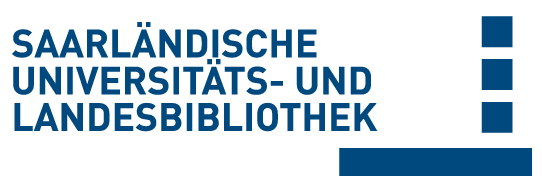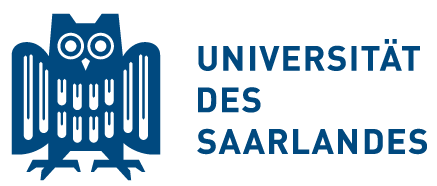Please use this identifier to cite or link to this item:
doi:10.22028/D291-41676 | Title: | Einfluss einer SGLT2-Inhibition auf das Remodeling und die sympathische Innervation im linken Atrium in einem Maus-Modell mit chronischer Nierenerkrankung |
| Author(s): | Pfau, Vanessa |
| Language: | German |
| Year of Publication: | 2023 |
| Place of publication: | Homburg/Saar |
| DDC notations: | 610 Medicine and health |
| Publikation type: | Dissertation |
| Abstract: | Die chronische Nierenerkrankung (CKD) stellt eine weltweit hoch prävalente Erkrankung dar und
ist mit einem hohen Risiko, kardiovaskuläre Erkrankungen zu entwickeln, assoziiert. Eine hierbei
nicht zu vernachlässigende Komplikation ist das Vorhofflimmern (VHF), das wiederum zu einer
gesteigerten Mortalität und Morbidität führt. Es entsteht im Rahmen atrialer Umbauprozesse, dem
sogenannten Remodeling. Auch die erhöhte sympathische Aktivität bei einer CKD trägt zur Entstehung
und Progression von VHF bei. Sodium dependent glucose cotransporter 2-(„SGLT2“)-
Inhibitoren zeigten in den letzten Jahren kardioprotektive Effekte, die nicht auf das Patient*innenkollektiv
mit Diabetes mellitus beschränkt waren. Der Einfluss dieser Medikamentengruppe auf
atriale Remodelingprozesse und die erhöhte atriale sympathische Innervation und somit auf die
Progression von VHF im Rahmen einer CKD wurde allerdings noch nicht charakterisiert. Ziele
dieser Studie waren, die Einflüsse einer CKD auf proarrhythmische Umbauprozesse und die sympathische
Innervation im linken Atrium, sowie den Einfluss einer SGLT2-Inhibition mittels Empagliflozin
auf das linksatriale Remodeling und die linksatriale sympathische Innervation zu charakterisieren.
Methoden: SV129-Mäusen wurden über einen Zeitraum von 16 Wochen wechselnde Konzentrationen
von 0.1 % bzw. 0.2 % Adenin-haltigem Futter verabreicht, um eine CKD zu induzieren. Die
Mäuse wurden hierbei in eine Kontrollgruppe unter Normalfutter (Ko), eine Adenin-Gruppe (AD)
und in eine Adenin-gefütterte Behandlungsgruppe eingeteilt, die von Beginn an zusätzlich eine
Therapie mit Empagliflozin erhielt (AD+Empa). Sowohl die linksatrialen Remodelingprozesse als
auch die linksatriale Expression der Tyrosinhydroxylase als Marker für die sympathische Innervation
wurden im Anschluss der 16 Wochen über histologische Nachweisverfahren charakterisiert.
Ergebnisse: Das Adenin-Modell mit wechselnden Adenin-Konzentrationen führte im Vergleich
zur Kontrolle zu einer signifikanten Reduktion des linksatrialen Kardiomyozyten-Diameters (Ko:
16.60±0.8 μm vs. AD: 13.65±0.2 μm, p=0.037), während keine Veränderungen sowohl im Gehalt
der Fibrose (Ko: 7.58±0.4 % vs. AD: 6.85±0.7 %, p=0.61), bestehend aus epikardialer, endokardialer,
perivaskulärer und interstitieller Fibrose, als auch im Gehalt der interstitiellen Fibrose (Ko:
3.61±0.2 % vs. AD: 4.19±0.4 %, p=0.49) nach Adenin-Fütterung im Vergleich zur Kontrolle feststellbar
waren. Jedoch konnte in den Tieren mit CKD eine signifikant erhöhte Expression der Ty2
rosinhydroxylase im linken Atrium festgestellt werden (Ko: 1.0±0.1 Tyrosinhydroxylase-positiv gefärbte
Nervenfasern pro linksatrialer Gesamtfläche vs. AD: 1.58±0.1 Tyrosinhydroxylase-positiv
gefärbte Nervenfasern pro linksatrialer Gesamtfläche, p=0.047). Verglichen gegen die unbehandelte
Adenin-Gruppe zeigte die Gabe von Empagliflozin bei CKD zwar keine Veränderung der
Kardiomyozyten-Größe (AD: 13.65±0.2 μm vs. AD+Empa: 13.97±0.4 μm, p=0.99), jedoch sanken
sowohl die Fibrose (AD: 6.85±0.7 % vs. AD+Empa: 5.14±0.3 %, p=0.047) als auch die interstitielle
Fibrose (AD: 4.19±0.4 % vs. AD+Empa: 2.67±0.3 %, p=0.013) im Rahmen der Therapie mit Empagliflozin
signifikant ab. Ebenfalls konnte Empagliflozin die erhöhte linksatriale sympathische Innervation
numerisch reduzieren (AD: 1.58±0.1 Tyrosinhydroxylase-positiv gefärbte Nervenfasern
pro linksatrialer Gesamtfläche vs. AD+Empa: 1.28±0.1 Tyrosinhydroxylase-positiv gefärbte Nervenfasern
pro linksatrialer Gesamtfläche, p=0.39). Die Adenin-induzierte CKD führte weder zu
einem signifikanten Anstieg der Inflammation noch zu einer Zunahme der interstitiellen extrazellulären
Matrix (EZM) im linken Atrium. Auch zeigte die Behandlungsgruppe weder anti-inflammatorische
Effekte noch Auswirkungen auf die interstitielle EZM.
Fazit: In SV129-Mäusen führte eine Adenin-induzierte CKD zu einer signifikant erhöhten Expression
der Tyrosinhydroxylase im linken Atrium, was auf eine vermehrte sympathische Innervation
als Folge der CKD hinweisen könnte. In diesem CKD-Modell führte die Empagliflozin-Therapie zu
einer signifikanten Reduktion des linksatrialen Fibrosegehalts und konnte gleichzeitig die erhöhte
linksatriale sympathische Innervation leicht reduzieren. Auf die Abnahme der Kardiomyozyten-
Größe bei CKD konnte hingegen kein Effekt durch Empagliflozin festgestellt werden. Zusammenfassend
lässt sich sagen, dass eine SGLT2-Inhibition durch Empagliflozin bei CKD die Bildung
eines arrhythmogenen Substrates im linken Atrium unterdrückt und somit das Auftreten von VHF
in Patient*innen mit CKD vermindern könnte. Chronic kidney disease (CKD) is a highly prevalent disease worldwide and is associated with a high risk of developing cardiovascular disease. A complication that should not be neglected is atrial fibrillation (AF), which in turn leads to increased mortality and morbidity. It develops in the context of atrial remodeling processes. Increased sympathetic activity in CKD also contributes to the development and progression of AF. Sodium dependent glucose cotransporter 2-(‘SGLT2’) inhibitors have shown cardioprotective effects in recent years that were not limited to the patient population with diabetes mellitus. However, the influence of this drug class on atrial remodeling processes and on increased atrial sympathetic innervation and thus, on the progression of AF in the setting of CKD has not been characterized yet. The aims of this study were to characterize the influences of CKD on proarrhythmic remodeling processes and on sympathetic innervation in the left atrium, as well as to characterize the influence of SGLT2 inhibition by empagliflozin on left atrial remodeling and on left atrial sympathetic innervation. Methods: SV129 mice were administered alternating concentrations of 0.1% or 0.2% adeninecontaining chow over a period of 16 weeks to induce CKD. The mice were divided into a control group on normal chow (Ko), an adenine group (AD) and an adenine-fed treatment group that received additional therapy with empagliflozin from baseline (AD+Empa). Both left atrial remodeling processes and left atrial expression of tyrosine hydroxylase as a marker for sympathetic innervation were characterized by histological detection techniques at the end of 16 weeks. Results: The adenine model with alternating adenine concentrations resulted in a significant reduction of the left atrial cardiomyocyte diameter compared to the control (Ko: 16.60±0.8 μm vs. AD: 13.65±0.2 μm, p=0.037), while no changes were observed in both the content of fibrosis (Ko: 7.58±0.4 % vs. AD: 6.85±0.7 %, p=0.61), consisting of epicardial, endocardial, perivascular and interstitial fibrosis, as well as in the content of interstitial fibrosis (Ko: 3.61±0.2 % vs. AD: 4.19±0.4 %, p=0.49) after adenine feeding compared to control. However, a significantly increased expression of tyrosine hydroxylase in the left atrium was detected in the animals with CKD (Ko: 1.0±0.1 tyrosine hydroxylase positively stained nerve fibers per total left atrial area vs. AD: 1.58±0.1 tyrosine hydroxylase positively stained nerve fibers per total left atrial area, p=0.047). Compared with the untreated adenine group, administration of empagliflozin in CKD showed no change in cardiomyocyte size (AD: 13.65±0.2 μm vs. AD+Empa: 13.97±0.4 μm, p=0. 99), however, both fibrosis (AD: 6.85±0.7% vs. AD+Empa: 5.14±0.3%, p=0.047) and interstitial fibrosis (AD: 4.19±0.4% vs. AD+Empa: 2.67±0.3%, p=0.013) decreased significantly during therapy with empagliflozin. Furthermore, empagliflozin was able to numerically reduce the increased left atrial sympathetic innervation (AD: 1.58±0.1 tyrosine hydroxylase positively stained nerve fibers per total left atrial area 4 vs. AD+Empa: 1.28±0.1 tyrosine hydroxylase positively stained nerve fibers per total left atrial area, p=0.39). Adenine-induced CKD did not significantly increase inflammation or interstitial extracellular matrix (ECM) in the left atrium. Also, the treatment group showed neither anti-inflammatory effects nor effects on interstitial ECM. Conclusion: In SV129 mice, adenine-induced CKD resulted in significantly increased expression of tyrosine hydroxylase in the left atrium, which may indicate increased sympathetic innervation as a consequence of CKD. In this CKD model, empagliflozin therapy resulted in a significant reduction in left atrial fibrosis content and in a concomitant slight reduction in increased left atrial sympathetic innervation. In contrast, no effect of empagliflozin was detected on the decrease in cardiomyocyte size in CKD. In conclusion, SGLT2 inhibition by empagliflozin in CKD suppresses the formation of an arrhythmogenic substrate in the left atrium and thus might reduce the occurrence of AF in patients with CKD. |
| Link to this record: | urn:nbn:de:bsz:291--ds-416764 hdl:20.500.11880/40258 http://dx.doi.org/10.22028/D291-41676 |
| Advisor: | Böhm, Michael |
| Date of oral examination: | 31-Jan-2024 |
| Date of registration: | 21-Jul-2025 |
| Faculty: | M - Medizinische Fakultät |
| Department: | M - Innere Medizin |
| Professorship: | M - Prof. Dr. Michael Böhm |
| Collections: | SciDok - Der Wissenschaftsserver der Universität des Saarlandes |
Files for this record:
| File | Description | Size | Format | |
|---|---|---|---|---|
| Dissertation Vanessa Pfau SciDoc.pdf | 32,85 MB | Adobe PDF | View/Open |
Items in SciDok are protected by copyright, with all rights reserved, unless otherwise indicated.

